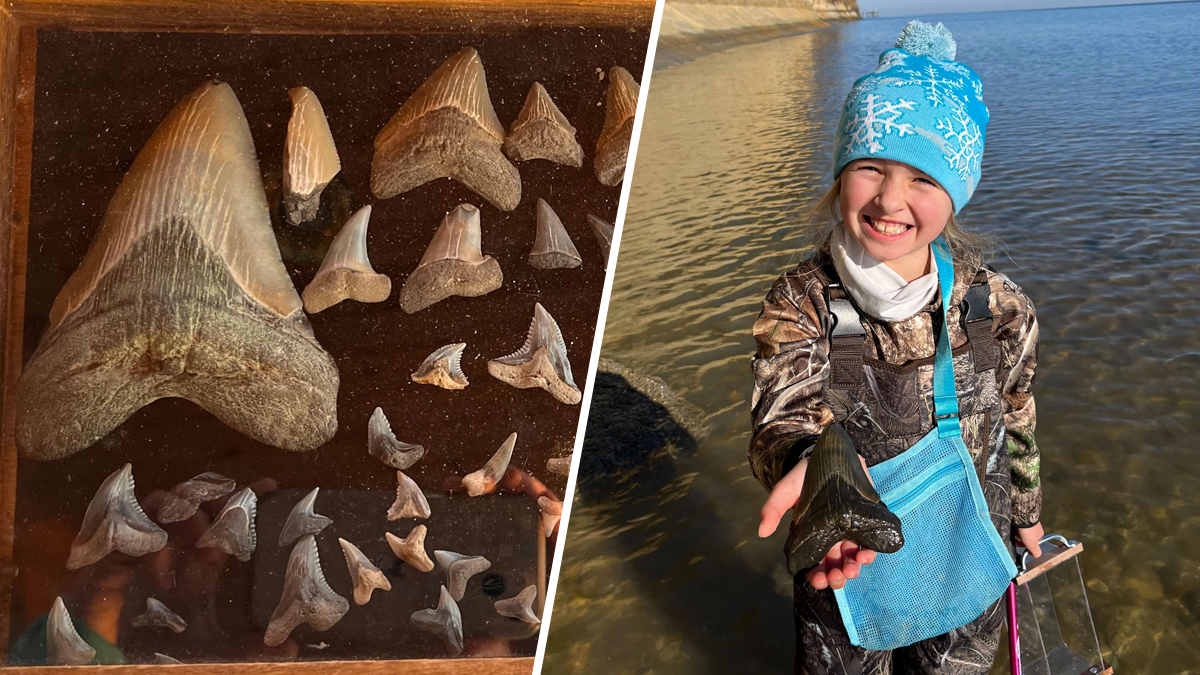An amazing discovery along the shores of the Chesapeake Bay dating back 10 million years soon will be displayed to the public in Calvert County, Maryland.
Along the western shore of the Chesapeake Bay where more than 30 miles of cliffs – some as high as 100 feet – generations of people have been finding fossils, especially shark teeth that date back millions of years to the Miocene era.
Calvert Marine Museum Paleontology Collection Manager John Nance began searching that shoreline for shark teeth when he was a young boy.
“I got started with my grandfather,” he said. “He would take me out to the beach when I was a little kid.”
We've got the news you need to know to start your day. Sign up for the First & 4Most morning newsletter — delivered to your inbox daily. >Sign up here.
For the past eight years, Nance and other scientists have been searching and finding teeth that belonged to the same shark – a giant megalodon that swam in the in the waters that is now the Chesapeake Bay 10 million years ago. Over the years, Nance found one or two teeth from the shark. Then two years ago, he got lucky.
“We found the holy grail of collecting for Calvert Cliffs,” Nance said.
“This one is off the charts; it’s an unbelievable thing to discover,” he said.
While searching for shark teeth, Nance came upon an injured baby deer along the shoreline.
“And I come across this little, tiny day- or two- old fawn that was on the beach, and it was crying. Could actually see its mom at the top of the cliff,” he said.
As he was helping the deer, Nance looked down at his feet and couldn't believe what he saw.
“It’s just astonishment,” he said.
Nance was standing on a motherload of shark teeth.
“By the end of the day when we finally had to call it quits, we had found 17 teeth that day,” Nance said.
The teeth came from a shark as big as a school bus.
“Around 50 feet long – give or take – and we know that because the teeth, the largest teeth that we have are around 5-and-a-half inches, and so sort it’s of a roughly 10 feet for every inch of shark’s tooth is the length of the animal,” Nance said.
Nance and his colleagues at the museum collected 53 teeth from the same megalodon. The odds?
“Astronomical,” Nance said. “It’s, it’s extremely rare. So there’s only a handful of other known megalodon associations in the world, and so this is now one of those, those handful.”
In addition to the fossils being found in the same area, other characteristics strongly suggest they came from the same shark, according to the Calvert Marine Museum.
The museum won’t say exactly where Nance found the teeth. For anyone going to look for themselves, it’s important not to trespass and never to dig in the cliffs, which is illegal.
The teeth will go on display at the Calvert Marine Museum Solomons next month.
As for the newborn fawn, the Maryland Department of Natural Resources was able to reunite it with its mother.
News4 sends breaking news stories by email. Go here to sign up to get breaking news alerts in your inbox.



